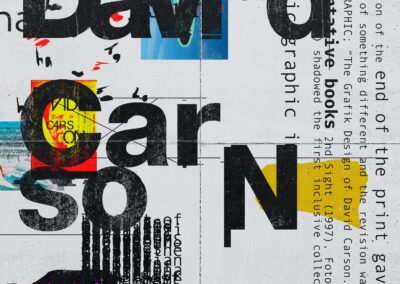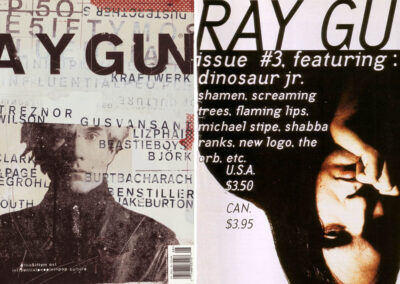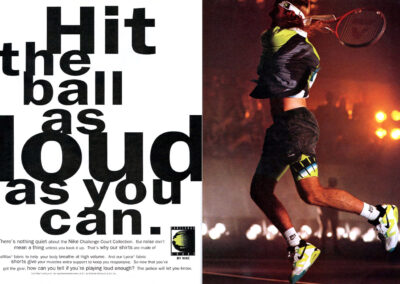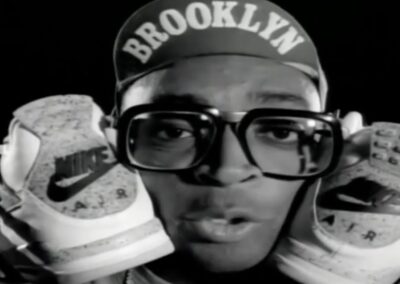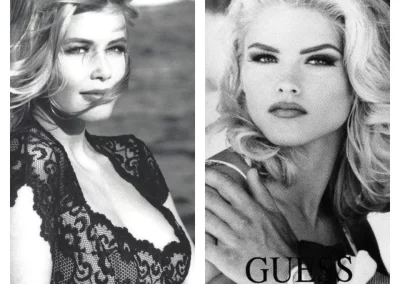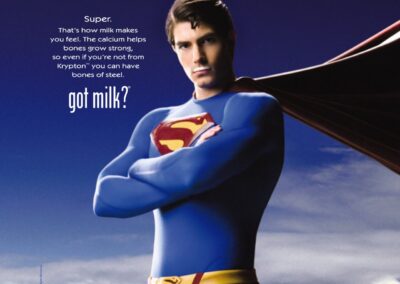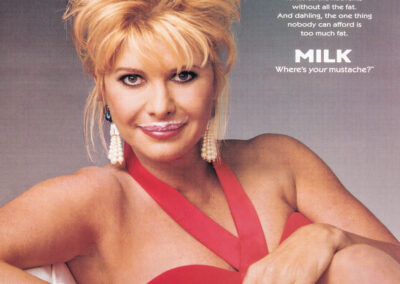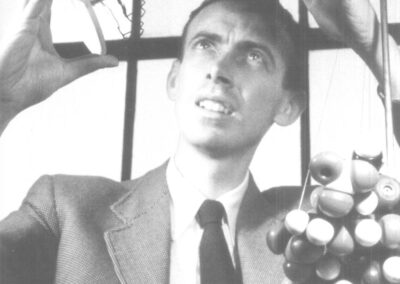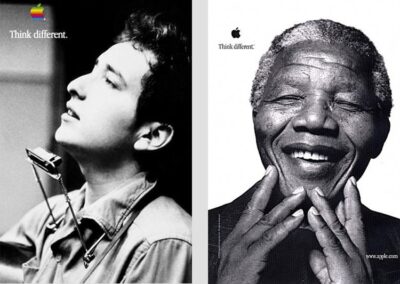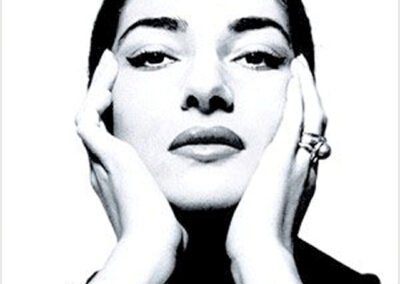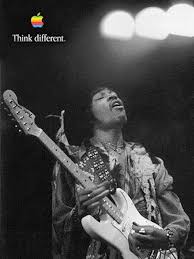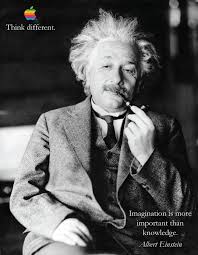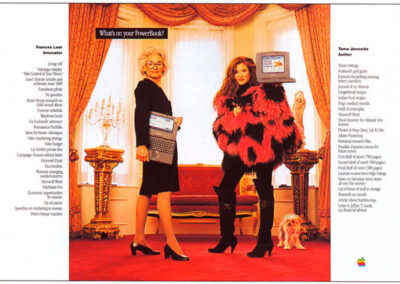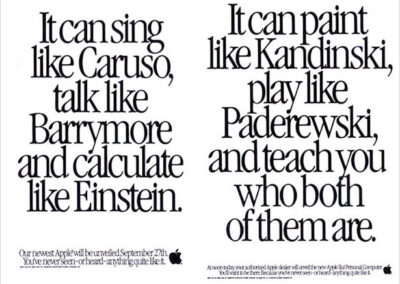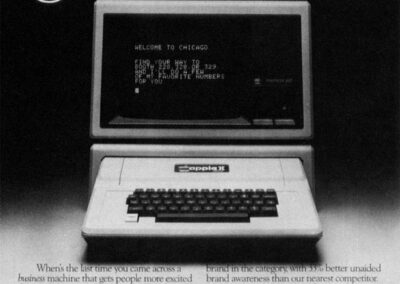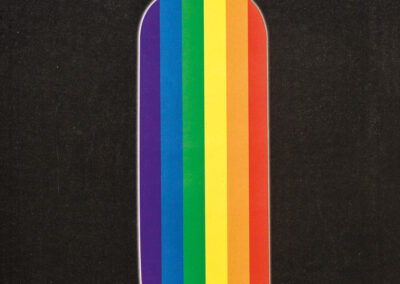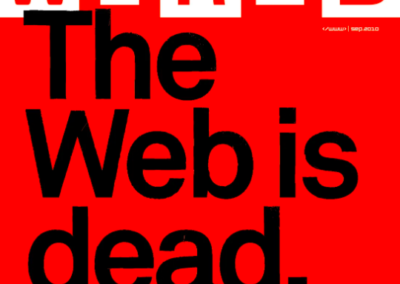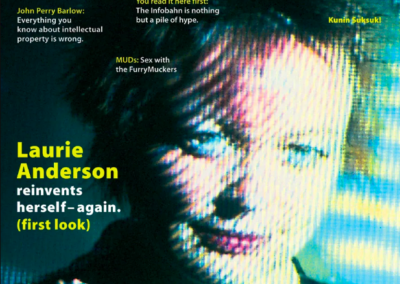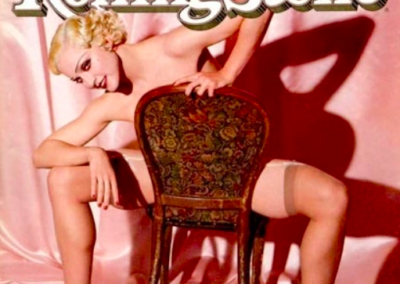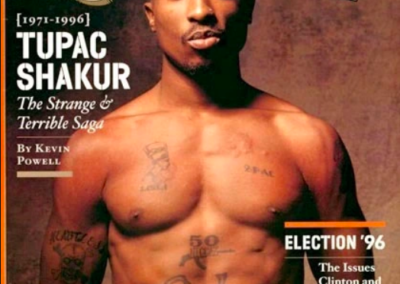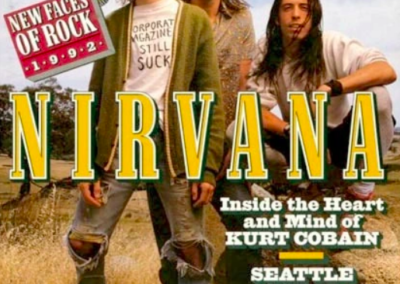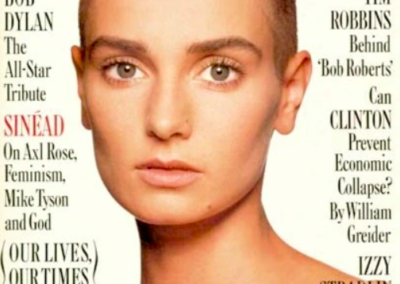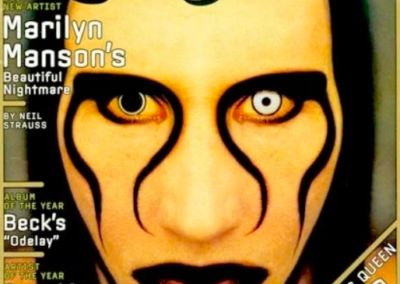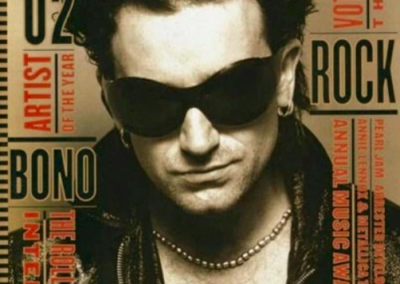1990s Advertising and Design
During the 1980s, postmodernists sought to overturn the one-size-fits-all functionalism into which modernist graphic design had settled. The coincidence of several economic, technical, and cultural forces consolidated the impact of their efforts. In 1983, Philip Meggs published the field’s first in-depth history textbook, A History of Graphic Design. Still a central text in design education, Meggs’s book established a trajectory of modernism that concluded in corporate America: a portrait of a professional establishment primed for youthful subversion.1 In 1984, Apple released the first Macintosh computer, which combined a “what-you-see-is-what-you-get” visual interface with some of the earliest consumer software for page layout and image manipulation. Experiments with these new tools were documented and debated in independent design magazines like Emigre, which was published out of Berkeley, CA beginning in 1984. Finally, throughout the mid-1980s, students in graduate design programs — most centrally at the Cranbrook Academy of Art in the Detroit, MI suburbs — were turning to literary and cultural theory in their search for new methods and forms. The stage was set for a broad transformation of design practice. These efforts, however, were only unevenly successful. The movement’s theoretical ambitions lost steam as postmodern style was pressed into the service of commodity differentiation during the 1990s.
90s Aesthetic Characteristics
There were a few key characteristics seen throughout famous 90s art style designs. The decade saw different trends, each with their own attributes that we’ll expand on in the “Assets” portion of this article. Generally, however, these were some of the key qualities of the 90s aesthetic:
- Vibrant colors: bright yellow, pink, purple, fluorescent green, cerulean blue, neon lasers. All these colors were applied to patterns for a bold and eye-catching effect in 90s graphics.
- Abstract shapes: bold, abstract, geometric shapes were standard in the 90s aesthetic. Patterns like polka dots were applied everywhere from clothing to famous 90s art.
- Fun Patterns: from 90s rave posters and their trippy background grids to geometric shapes applied to wallpapers and carpets, patterns were just everywhere.
- Gradients: the underground 90s rave posters included vibrant gradients.
- Font choices: Comic Sans style fonts were used mainly for pop style 1990s graphic design. Handwritten fonts were seen on the shows Rugrats and Full House. For more impact, condensed sans serifs were applied to grunge style and 90s rave posters.
Commercials
American Graphic Design in the 1990s: Deindustrialization and the Death of the Author


